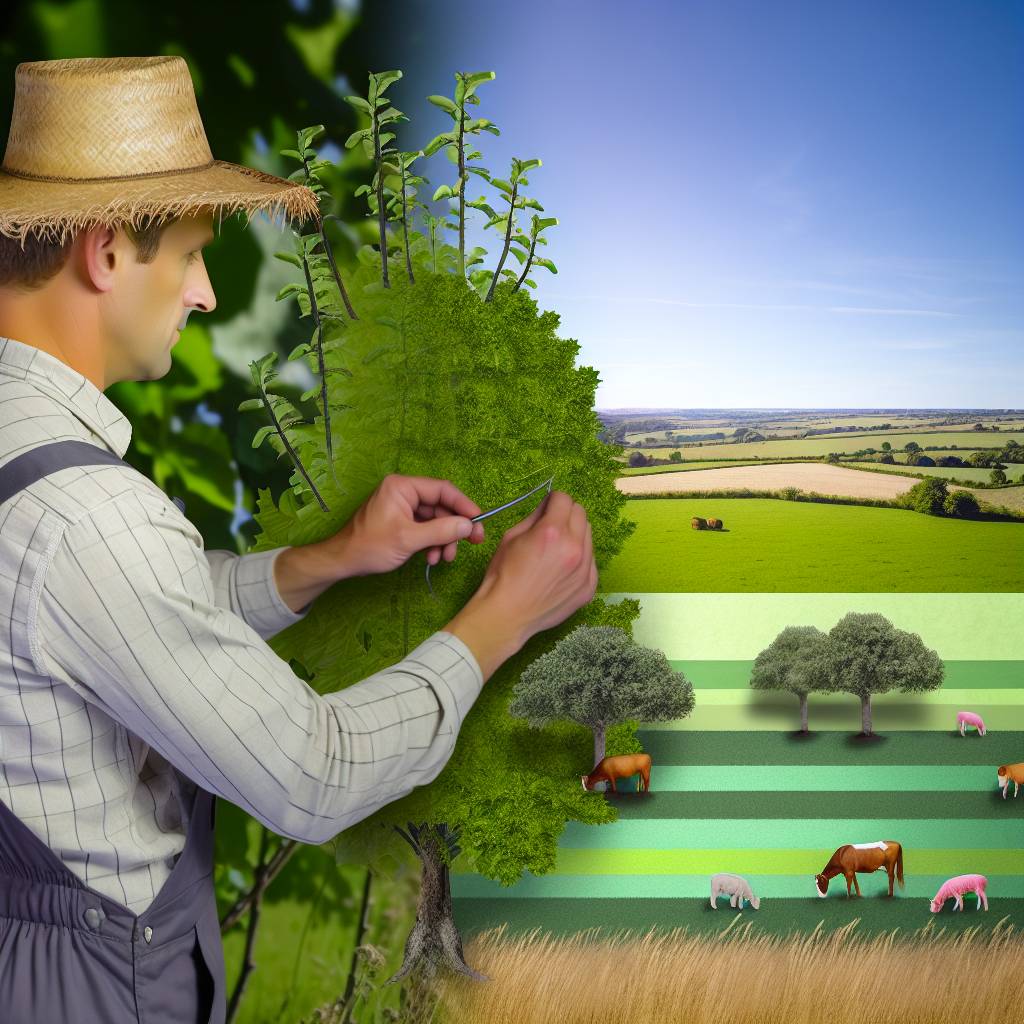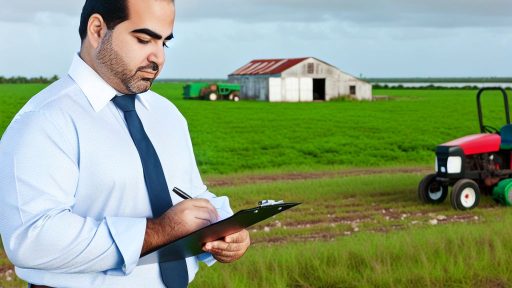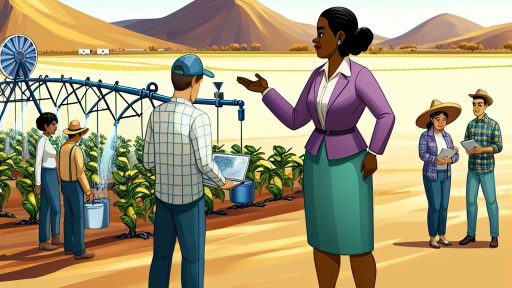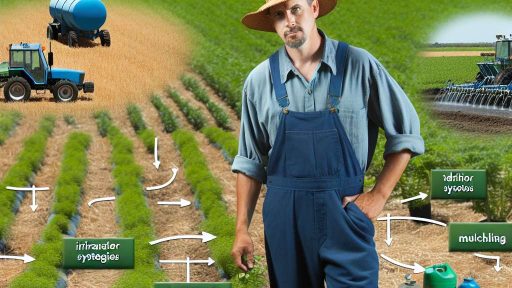Introduction to Agroforestry and Its Importance in Rural Settings
Agroforestry integrates trees and shrubs into agricultural landscapes.
This practice enhances biodiversity while optimizing land use.
Farmers benefit from increased crop yields and resilience.
Additionally, agroforestry improves soil health and reduces erosion.
These systems create habitats for various wildlife species.
Building Sustainable Ecosystems
Agroforestry promotes ecological sustainability in rural areas.
The combination of trees and crops fosters diverse ecosystems.
For instance, trees provide shade for plants and animals.
This shade helps maintain moisture levels in the soil.
Moreover, diverse crops increase resilience against pests and diseases.
Economic Opportunities
Integrating agroforestry provides new income streams for farmers.
Farmers can harvest fruits, nuts, and timber from trees.
This diversification enhances economic stability in rural communities.
Additionally, agroforestry can support local tourism through scenic landscapes.
Climate Change Mitigation
Agroforestry practices play a critical role in climate change adaptation.
Transform Your Agribusiness
Unlock your farm's potential with expert advice tailored to your needs. Get actionable steps that drive real results.
Get StartedTrees sequester carbon dioxide, reducing greenhouse gases.
Furthermore, they help mitigate extreme weather effects on crops.
Healthy agroforestry systems can enhance climate resilience.
Overview of Biodiversity
Definition of Biodiversity
Biodiversity refers to the variety of life on Earth.
It encompasses different species, genetic variations, and ecosystems.
This diversity plays a vital role in environmental health.
Furthermore, it contributes to ecosystem resilience.
Key Concepts of Biodiversity
Species diversity includes the number of different species in a habitat.
Genetic diversity pertains to the variations within species.
Ecosystem diversity refers to the variety of habitats and ecological processes.
All these factors work together to support life systems.
The Importance of Biodiversity
Biodiversity provides essential services to humans and the environment.
These services include pollination, nutrient cycling, and climate regulation.
Additionally, biodiversity enhances food security by maintaining ecosystem productivity.
It also supports cultural values and recreational opportunities.
Threats to Biodiversity
Human activities significantly threaten biodiversity worldwide.
Habitat destruction, pollution, and climate change are major contributors.
Overexploitation of species also impacts biodiversity negatively.
These threats lead to increased extinction rates across various groups.
Measures to Protect Biodiversity
Conservation efforts aim to safeguard biodiversity effectively.
Protected areas help preserve habitats and species.
Sustainable practices in agriculture and forestry reduce environmental impacts.
Additionally, public awareness plays a crucial role in conservation efforts.
How Agroforestry Enhances Biodiversity on Rural Properties
Integrating Trees and Agriculture
Agroforestry combines agricultural practices with tree cultivation.
Showcase Your Farming Business
Publish your professional farming services profile on our blog for a one-time fee of $200 and reach a dedicated audience of farmers and agribusiness owners.
Publish Your ProfileThis integration creates diverse habitats for various species.
Farmers can grow crops under tree canopies.
As a result, this practice boosts biodiversity on rural properties.
Improving Soil Health
Trees contribute to healthier soil through root systems.
They prevent soil erosion, enhancing land stability.
Moreover, the organic matter from fallen leaves enriches soil quality.
Healthy soil supports a wider range of microorganisms and plants.
Providing Habitat for Wildlife
Agroforestry creates refuge spaces for birds and small mammals.
Different plant layers offer nesting and feeding opportunities.
This leads to increased populations of native creatures.
Consequently, a vibrant ecosystem develops within rural areas.
Enhancing Pest Management
Diverse plant species help control agricultural pests naturally.
Beneficial insects thrive in varied environments.
This natural pest management reduces the need for chemical pesticides.
Ultimately, biodiversity supports balanced food webs on farms.
Climate Resilience and Carbon Sequestration
Agroforestry systems enhance resilience to climate extremes.
Trees can sequester carbon, mitigating climate change impact.
This promotes overall ecosystem health and sustainability.
An increase in biodiversity helps maintain stable ecosystems.
Community Engagement and Knowledge Sharing
Implementing agroforestry fosters community interactions.
Local farmers can share techniques and successes in biodiversity efforts.
This enhanced communication leads to collaborative conservation strategies.
Furthermore, education initiatives can promote awareness of biodiversity benefits.
Uncover the Details: How Changing Rainfall Patterns Influence Agricultural Land Prices
Economic Benefits of Increased Biodiversity through Agroforestry
Enhancing Crop Yields
Agroforestry practices significantly boost crop yields.
Diverse plant species improve soil health and nutrient availability.
This results in healthier crops and increased produce for farmers.
Moreover, crop diversity reduces pest outbreaks and disease prevalence.
Increasing Income Opportunities
Diversifying crops can create new income streams for rural farmers.
Farmers may sell a variety of products, including fruits and nuts.
This broadens their market reach and enhances profitability.
Additionally, agroforestry supports value-added products like jams and juices.
Reducing Input Costs
Agroforestry systems can lead to lower input costs.
By promoting biodiversity, farmers reduce reliance on chemical fertilizers.
Natural pest control mechanisms help in minimizing pesticide use.
This decrease in inputs directly affects farmers’ bottom lines.
Boosting Resilience to Market Fluctuations
Diversified agroforestry systems enhance economic resilience.
By producing multiple crops, farmers mitigate risks associated with market changes.
A varied portfolio ensures that a decline in one crop does not devastate income.
This stability supports long-term planning and investments.
Showcase Your Farming Business
Publish your professional farming services profile on our blog for a one-time fee of $200 and reach a dedicated audience of farmers and agribusiness owners.
Publish Your ProfileCreating Employment Opportunities
Agroforestry can generate new job opportunities in rural areas.
It requires labor for planting, maintenance, and harvesting diverse crops.
Local communities benefit from increased employment and training programs.
This contributes to overall economic growth in rural regions.
Attracting Eco-Tourism
Integrating biodiversity attracts eco-tourism to rural properties.
Visitors are drawn to farms that showcase diverse ecosystems.
This can provide additional income sources through tourism-related activities.
Moreover, eco-tourism promotes awareness and appreciation of sustainable practices.
Delve into the Subject: How Climate Change Affects Crop Yields and Land Values
Role of Agroforestry in Soil Health and Ecosystem Resilience
Enhancing Soil Fertility
Agroforestry practices significantly improve soil fertility.
Tree roots facilitate nutrient cycling by accessing deep soil layers.
Moreover, fallen leaves and organic matter enrich the soil with nutrients.
This natural process increases soil organic carbon levels.
Improving Soil Structure
Agroforestry helps in enhancing soil structure effectively.
Diverse root systems stabilize soil and prevent erosion.
These systems increase water infiltration and retention capacity.
In turn, this promotes better conditions for crop growth.
Boosting Biodiversity
Integrating trees and crops creates diverse habitats for wildlife.
This diversity supports beneficial insects and pollinators.
Further, it encourages a balanced ecosystem and pest management.
Consequently, farmers experience fewer losses to pests and diseases.
Enhancing Ecosystem Resilience
Agroforestry contributes to ecosystem resilience against climate change.
Trees act as windbreaks, reducing wind erosion and damage.
They also moderate temperatures and enhance microclimates.
This leads to improved survival rates of crops during extreme weather.
Water Management Improvement
Agroforestry systems can significantly improve water management.
Tree canopies reduce surface runoff, promoting water conservation.
Roots enhance groundwater recharge while reducing flooding risks.
This results in a more stable water supply for crops and livestock.
Integrating Livestock
Incorporating livestock within agroforestry systems enhances nutrient cycling.
Animal manure acts as a natural fertilizer, enriching the soil.
Additionally, grazing livestock can help manage undergrowth effectively.
This sustainable practice promotes better nutrient distribution across land.
Explore Further: How Tornadoes Affect Farmland Prices in the United States
Case Studies: Successful Agroforestry Practices and Their Biodiversity Impact
Integrating Trees in Cropping Systems
In Brazil, farmers integrate native trees into traditional crop fields.
This practice enhances soil health and prevents erosion.
Furthermore, it provides habitat for various wildlife species.
This model leads to increased biodiversity in rural landscapes.
Silvopasture Practices in Colombia
Colombian ranchers implement silvopasture methods successfully.
This approach combines trees, forage, and livestock in one space.
Showcase Your Farming Business
Publish your professional farming services profile on our blog for a one-time fee of $200 and reach a dedicated audience of farmers and agribusiness owners.
Publish Your ProfileIt promotes soil fertility and creates important shade for animals.
Moreover, this system supports a range of plant and animal species.
Agroforestry in Indonesia
In Indonesia, agroforestry combines coffee and durian trees.
This method increases crop yields and enhances biodiversity.
It supports numerous pollinators and other beneficial insects.
Farmers report improved income due to diversified products.
Community-Based Agroforestry in Kenya
Kenyan communities engage in agroforestry for sustainable land use.
They plant indigenous trees alongside food crops and livestock.
This strategy enriches biodiversity within the ecosystem.
It also strengthens local economies through sustainable practices.
Agroecology in the United States
In the United States, agroecological practices are gaining traction.
Farmers cultivate diverse crops with intercropping techniques.
This creates stable ecosystems promoting wildlife habitats.
As a result, farmers experience lower pest levels and healthier soil.
Gain More Insights: Creating Climate-Resilient Properties With Agroforestry Approaches

Challenges and Considerations in Implementing Agroforestry
Understanding Financial Implications
Transitioning to agroforestry requires upfront investment.
Farmers must evaluate the costs of new trees and practices.
Moreover, potential financial returns may take time to materialize.
Thus, financial planning is crucial for successful implementation.
Managing Land and Plant Selection
Selecting the right mix of trees and crops is vital.
Different species have varying growth rates and requirements.
Farmers should consider local climate and soil conditions.
Additionally, land management practices will need adjustments.
Addressing Knowledge Gaps
Implementing agroforestry often requires specialized knowledge.
Farmers may benefit from training programs and workshops.
Connecting with local agricultural extension services can also help.
Peer networks can provide valuable insights and experiences.
Dealing with Policy and Regulatory Issues
Agroforestry may face regulatory hurdles in some regions.
Farmers must stay informed about local agricultural policies.
Some programs may provide incentives for sustainable practices.
However, navigating these regulations can be challenging.
Ensuring Environmental Benefits
Implementing agroforestry can enhance biodiversity.
However, careful planning is necessary to avoid ecological harm.
Maintaining a balance between trees and crops is crucial.
Farmers should monitor environmental impacts regularly.
Strategies for Promoting Agroforestry and Biodiversity Conservation
Education and Training Programs
Raising awareness about agroforestry benefits is essential.
Organize workshops that teach best practices in agroforestry.
Invite local farmers to share their experiences and successes.
Implement training sessions focusing on biodiversity conservation techniques.
Financial Incentives for Agroforestry
Introduce subsidies for farmers adopting agroforestry methods.
Showcase Your Farming Business
Publish your professional farming services profile on our blog for a one-time fee of $200 and reach a dedicated audience of farmers and agribusiness owners.
Publish Your ProfileEncourage local governments to provide tax breaks for sustainable practices.
Develop grant programs aimed at funding agroforestry projects.
Create partnerships with private sectors to finance biodiversity initiatives.
Community Engagement and Collaboration
Establish community groups focused on agroforestry practices.
Foster partnerships between farmers and environmental organizations.
Host local events to celebrate and promote biodiversity efforts.
Encourage sharing of resources and tools among community members.
Policy Support and Development
Advocate for policies that support agroforestry adoption.
Push for regulations that protect biodiversity and native species.
Engage policymakers in discussions on the importance of agroforestry.
Ensure that environmental policies include provisions for agroforestry.
Research and Development Initiatives
Support research focused on agroforestry’s impact on ecosystems.
Encourage universities to collaborate with rural communities.
Fund studies that explore innovative agroforestry techniques.
Share findings to promote best practices among farmers.
Promoting Agroforestry Products
Market agroforestry products as sustainable and eco-friendly options.
Highlight the health benefits of products grown in diverse systems.
Use social media to enhance visibility for locally-grown products.
Collaborate with retailers to offer more agroforestry products.
The Future of Agroforestry in Enhancing Rural Biodiversity
Importance of Agroforestry
Agroforestry plays a crucial role in bolstering rural biodiversity.
It integrates trees and shrubs into agricultural systems.
This practice enhances habitat for various species.
Moreover, it improves soil health and water retention.
As a result, farmers can achieve sustainable yields.
Challenges and Solutions
Despite its benefits, agroforestry faces challenges.
Limited awareness among farmers inhibits its adoption.
Furthermore, economic barriers may discourage investment.
Educational programs can provide valuable insights.
Incentivizing agroforestry practices will also help.
Future Directions
The future of agroforestry looks promising.
Innovations in technology are emerging to aid farmers.
For instance, precision agriculture can enhance efficiency.
Research into native species will promote biodiversity.
Likewise, collaborative efforts can improve successful practices.
Community Involvement
Community support is vital for agroforestry’s success.
Local groups can promote awareness and education.
Additionally, involving youth in agroforestry initiatives is essential.
They will help cultivate future leaders in sustainable practices.
Impacts of Agroforestry on Biodiversity
Agroforestry can significantly enhance rural biodiversity.
By integrating it into farming systems, we protect ecosystems.
Showcase Your Farming Business
Publish your professional farming services profile on our blog for a one-time fee of $200 and reach a dedicated audience of farmers and agribusiness owners.
Publish Your ProfileThis approach ultimately leads to healthier, sustainable landscapes.
With continued effort, the potential for agroforestry is limitless.
Additional Resources
Rio synergies: how agroecology and restoration contribute to …




